Well hello, green thumbs and plant parents extraordinaire! If you’re anything like me, your potted plants are as cherished as royal offspring. But alas, we have to address the squirmy side of plant parenting – the worms.
From wrigglers to nematodes, let’s dive in, hand in gardening glove, and explore the world beneath the pot.
1. Earthworms
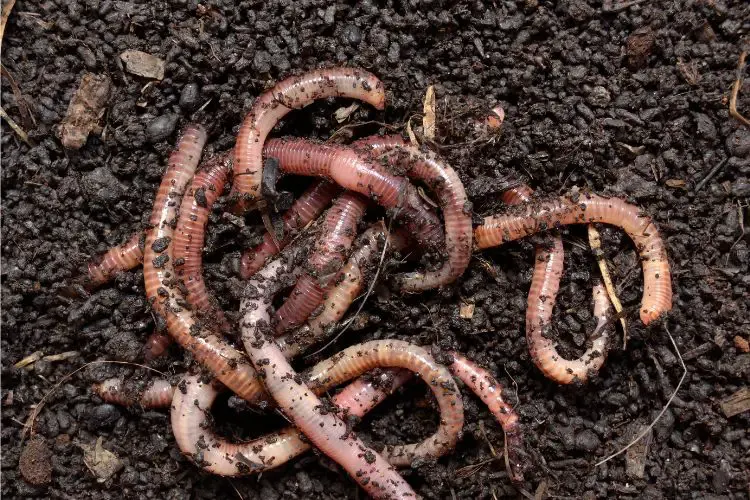
First up, our friendly neighborhood earthworms. Oh, these loveable wrigglers! They’re the superheroes of the soil world.
Think of them as mini ploughs, tirelessly working to break down organic matter and aerate our soil. This helps our beloved plants grow strong and healthy. It’s like they’re running a 24/7 soil spa, complete with mineral-rich castings (yes, that’s a polite way of saying worm poop). These castings act like a turbo-charged compost for your plants.
But like any superhero, sometimes their power can be a little too much. Overpopulation can disrupt plant roots as they overly aerate the soil. It’s like a massage that feels great at first, but then just won’t stop. So, if your plants start looking a bit peaky, it may be time to kindly rehome some of your wriggly friends.
2. Nematodes
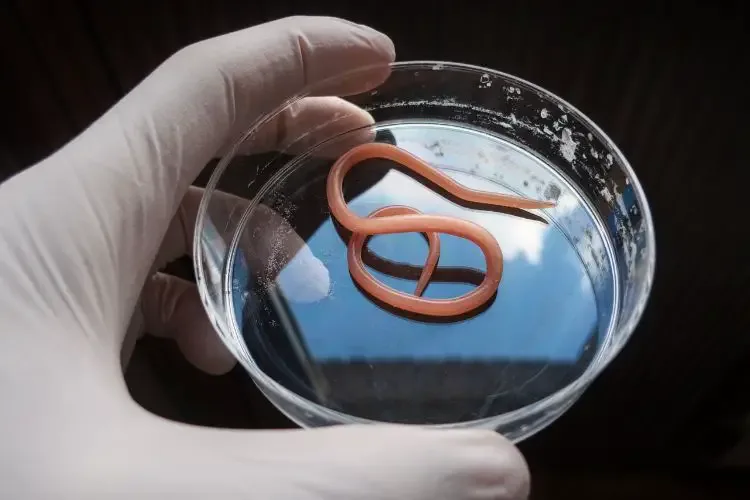
Next, let’s move on to the microscopic, often misunderstood nematodes. These tiny creatures are as diverse as the shows on your favorite streaming service.
Just like binge-worthy series, there are the ones we love and the ones we, well, love less. Beneficial nematodes munch on pests, while some less amicable ones can cause plant disease. They’re a bit like the antiheroes of the worm world – it depends on the plot (or pot) whether they’re heroes or villains.
They’re so small, you won’t see them without a microscope. But you can spot their handy (or harmful) work. If your plant is yellowing or wilting without a clear cause, it might be time to call in the nematode detectives. Remember, with nematodes, it’s all about balance. You want just enough to keep things in check, but not so many that they stage a plant coup.
3. Inchworms
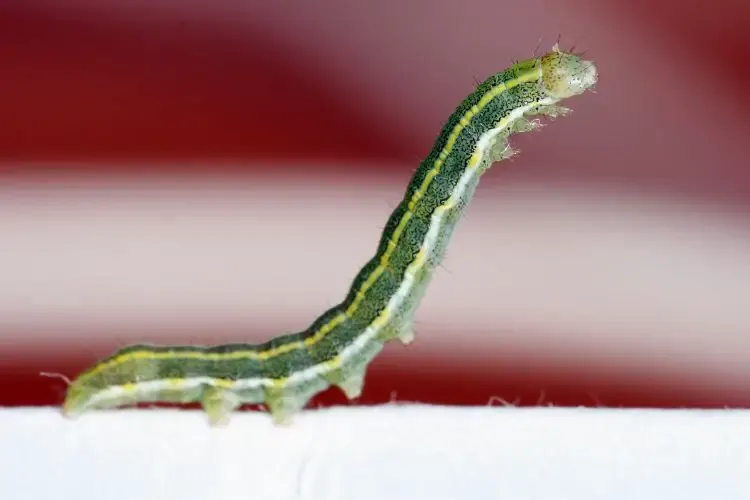
Who’s up for some wiggle room? Cue the inchworms, a.k.a. the measuring worms or loopers.
These little charmers do a quirky dance as they move, bending their bodies into a loop before stretching out again. They’re the living definition of the “worm” dance move. Unfortunately, as cute as their dance moves are, they are typically seen as pests. Inchworms are actually the larvae of Geometrid moths, and their preferred food is (you guessed it) your precious plants.
Yes, their life choices may leave us plant lovers a bit green (and not in a good way). But remember, they’re just trying to survive, same as the rest of us. If you see these critters doing the worm on your potted plants, it might be time to let them dance their way to a new home.
4. Grub Worms
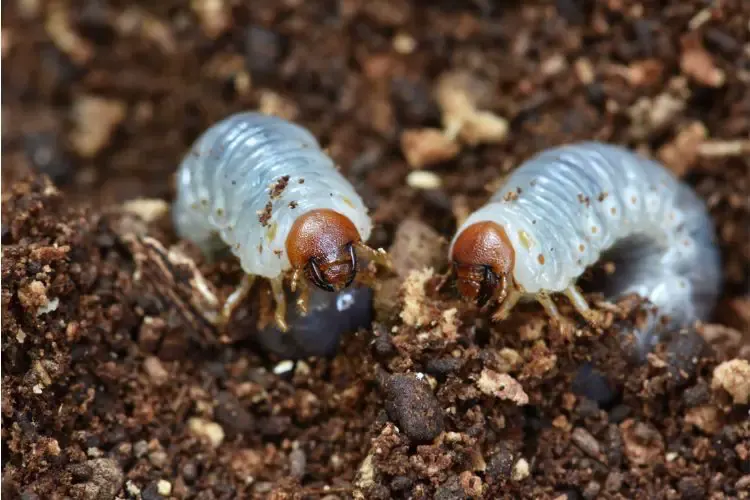
Ever found a chubby, off-white worm curled up in a C-shape in your pot? That’s a grub worm, the larval stage of various beetles.
Now, don’t let their seemingly innocent, chubby baby looks fool you. These little plumpers love to snack on plant roots. It’s like they’re on a root-only diet and let me tell you, they are committed. If your plants are wilting or dying despite your best efforts, it might be these covert operatives at work.
Grub worms are the equivalent of having an uncontrollable sweet-toothed kid in a candy store. The store being your plant pots, and the candy being the roots. In their case, though, it’s less “kid in a candy store” and more “grub in a root store.”
If you find these tubby munchers in your pots, it’s time for a polite, but firm eviction notice.
5. Cutworms
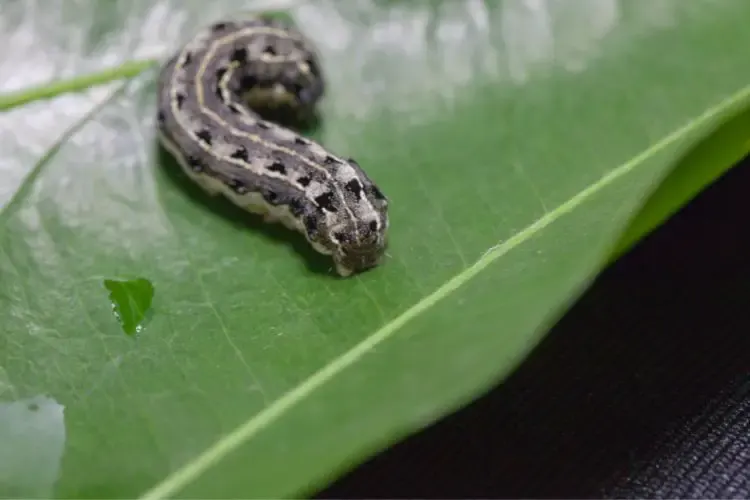
Speaking of root-munching larvae, allow me to introduce the cutworms.
Their name sounds like a bad ’80s hair band, but their appetite is more like a rock star’s. Cutworms are nocturnal creatures. They spend their days chillaxing in the soil or under debris and their nights rocking out at the root buffet.
Their late-night snacking can cause serious damage to your plants, and their stealth mode makes them hard to spot. So, if your plants are looking a little “cut” down despite all care, it may be time for a nighttime stakeout to catch these party animals in action.
6. Root-Knot Nematodes
Back to the microscopic world with the root-knot nematodes. These are like the evil twins of our earlier nematodes.
Their M.O. is infiltrating plant roots and causing knots or galls, which can be a serious hindrance to plant growth. They’re the proverbial bullies on the playground of your potted plants, causing trouble and taking what’s not theirs.
Like their nematode kin, they’re invisible to the naked eye, so it’s all about recognizing their handiwork. If you see unexplained swellings on your plant roots, you might have a root-knot problem. Never fear, though, there are ways to manage these tiny tyrants and reclaim your playground.
7. Fungus Gnat Larvae
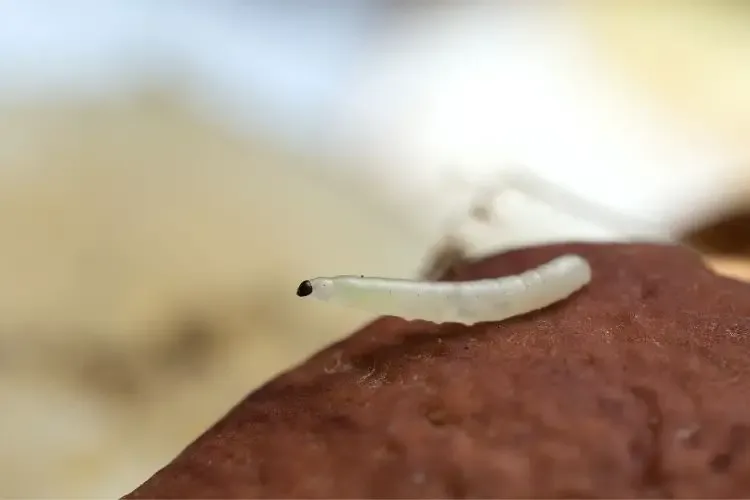
Finally, we meet the larvae of the fungus gnat. These critters are like the drama queens of the worm world. They’re not actually worms, but they wiggle, so they’ve made our list.
Fungus gnat larvae live in the top layers of soil and feed on fungi (hence their name), organic matter, and alas, plant roots. You’ll often spot their adult versions – tiny, fly-like insects – before noticing the larvae.
If you spot these flighty dramatists, it’s usually a sign you’ve been a little too generous with the watering can. So ease up on the hydration, allow the soil to dry out a bit between waterings, and these larvae should take the hint and move on.
Final Thoughts
Worms, they’re a wormy, squiggly part of our plant-loving lives. Some we cheer on as champions of the soil. Some we respect for their survival instincts, even as we gently redirect their appetites. And others, well, they’re the villains in our green-thumbed stories, causing chaos and claiming roots.
But whether friend or foe, these creatures remind us that there’s a whole world beneath the soil surface. A world that’s as complex and interesting as the one above. So next time you spot a worm, don’t just see it as a pest or a hero. See it as a part of this crazy, wonderful, wormy world of gardening we love so much.
Remember, we are all just trying to find our place in the pot!

